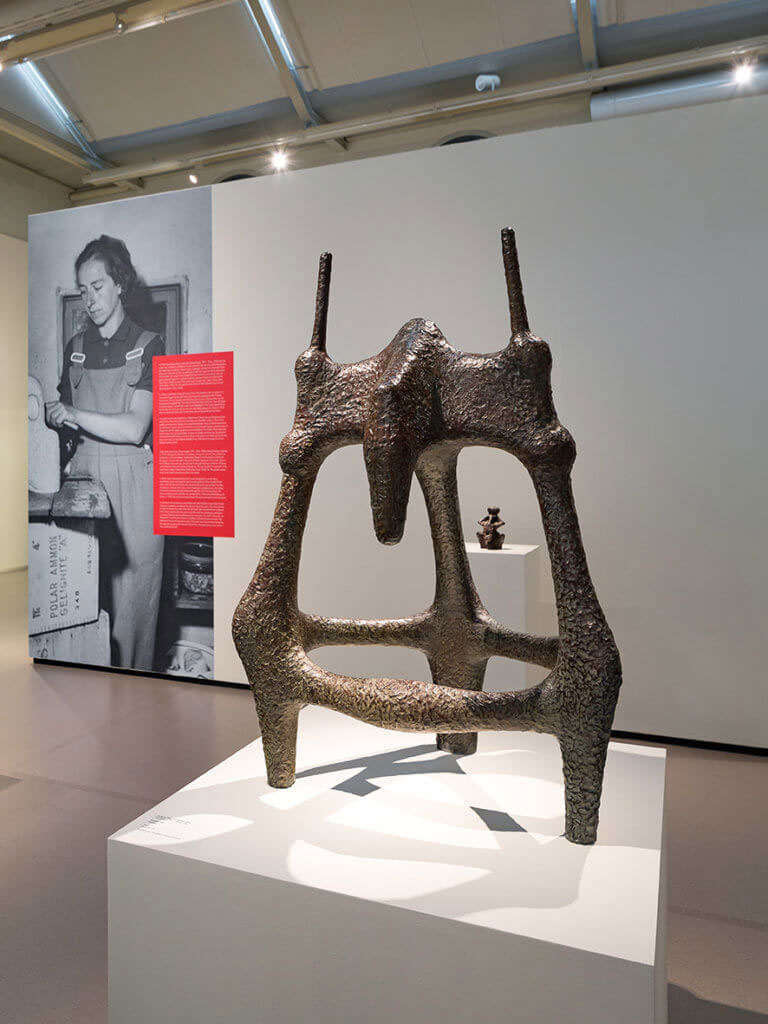Sonja Ferlov Mancoba started making sculptures in 1935. Painting then became of secondary importance. She created her sculptures in clay and plaster. Subdued forms with flowing lines dominate her oeuvre. A recurring motif in Ferlov Mancoba’s work is the mask. She discovered masks early on in her childhood through a family friend’s large collection of figures and masks from Africa. This influence can be seen, for example, in the work Mask (Table Mask/Birth of the Mask) (1965-75). The plaster version of this sculpture literally served as such in her studio.
In 1936, Ferlov Mancoba left for Paris. Here she played a crucial role in the contact between the French avant-garde and like-minded Danish artists. After the Second World War, she joined the artists’ association Høst in Denmark. And through Høst she became involved with Cobra. Her contribution was relatively limited, although her work was featured in the Cobra magazine and a booklet was dedicated to her in the series Bibliothèque de Cobra. In 1952, she and her husband Ernest Mancoba (also a Cobra member) returned to Paris for good.

In contrast to the exuberance and vitality associated with Cobra, Ferlov Mancoba sometimes worked on the same sculpture for years. Her focus was very much on the process rather than on the end result. She regarded her sculptures as living entities that she sent into the world as messengers, protectors or warriors fighting against egotism and inhumanity. For Ferlov Mancoba, art pointed the way forward, towards a healthier and more humane society. She believed in the social importance of art. This conviction was not only shaped by her experiences during the Second World War, but also by her experiences as a woman.

)